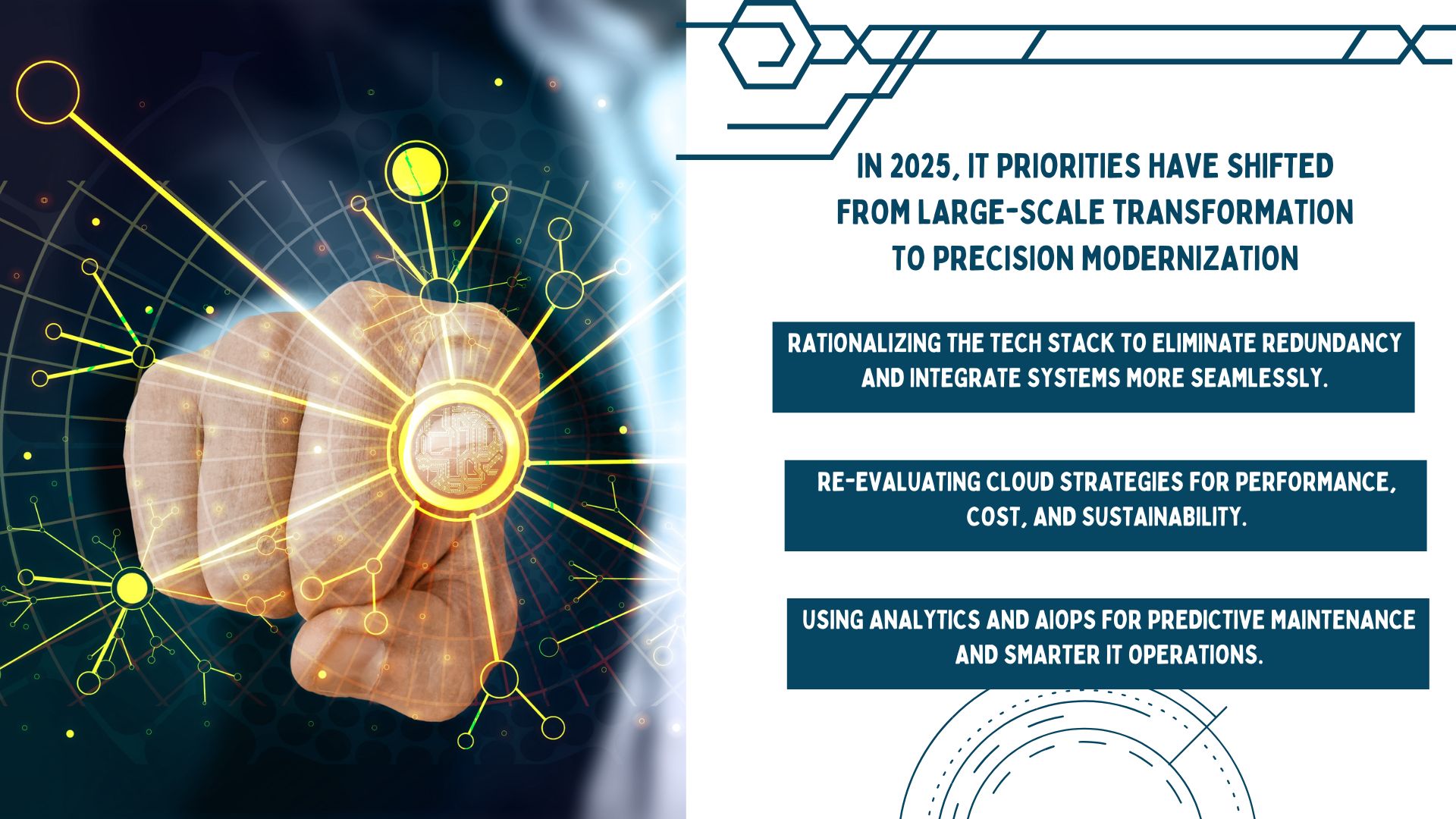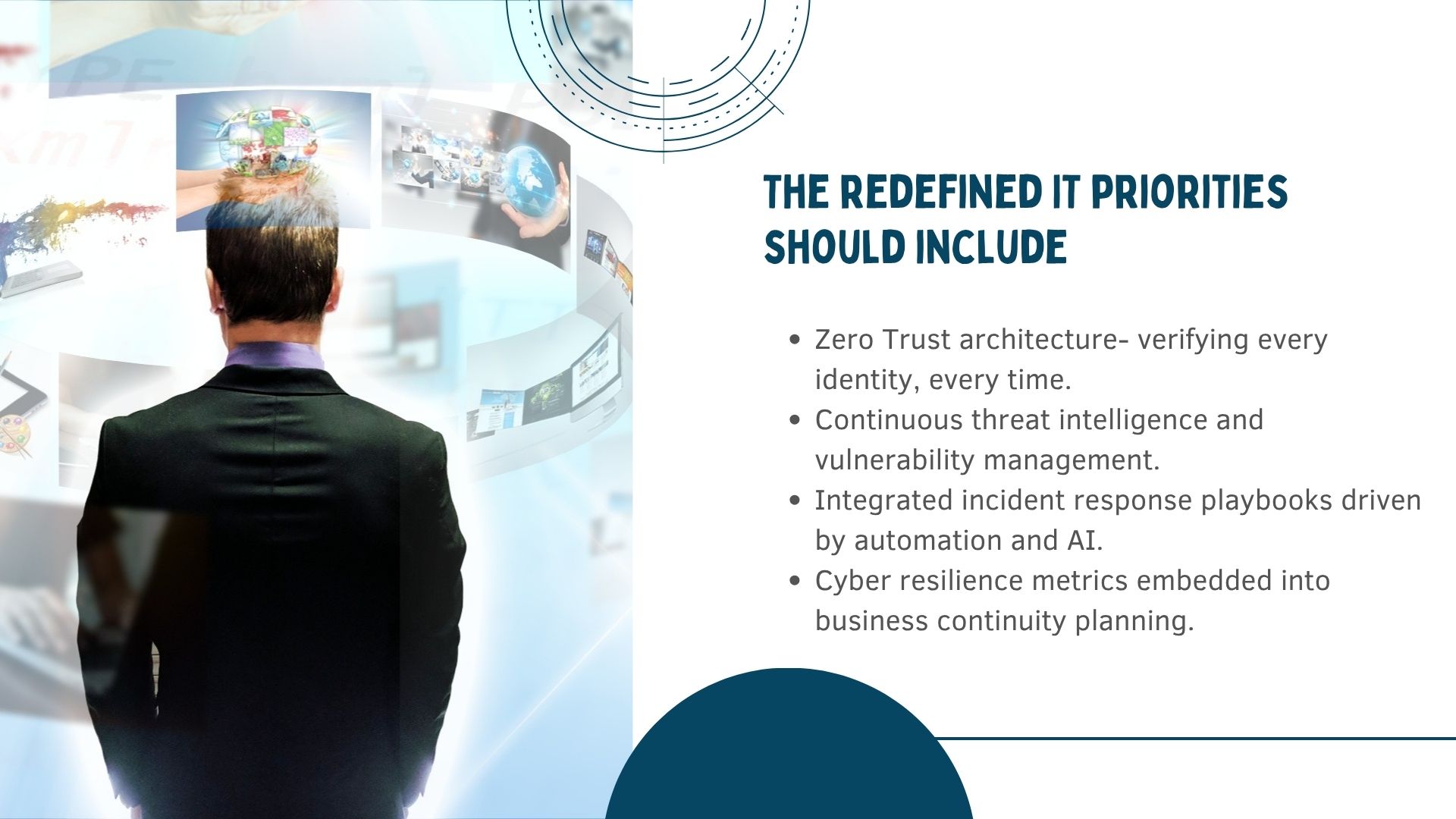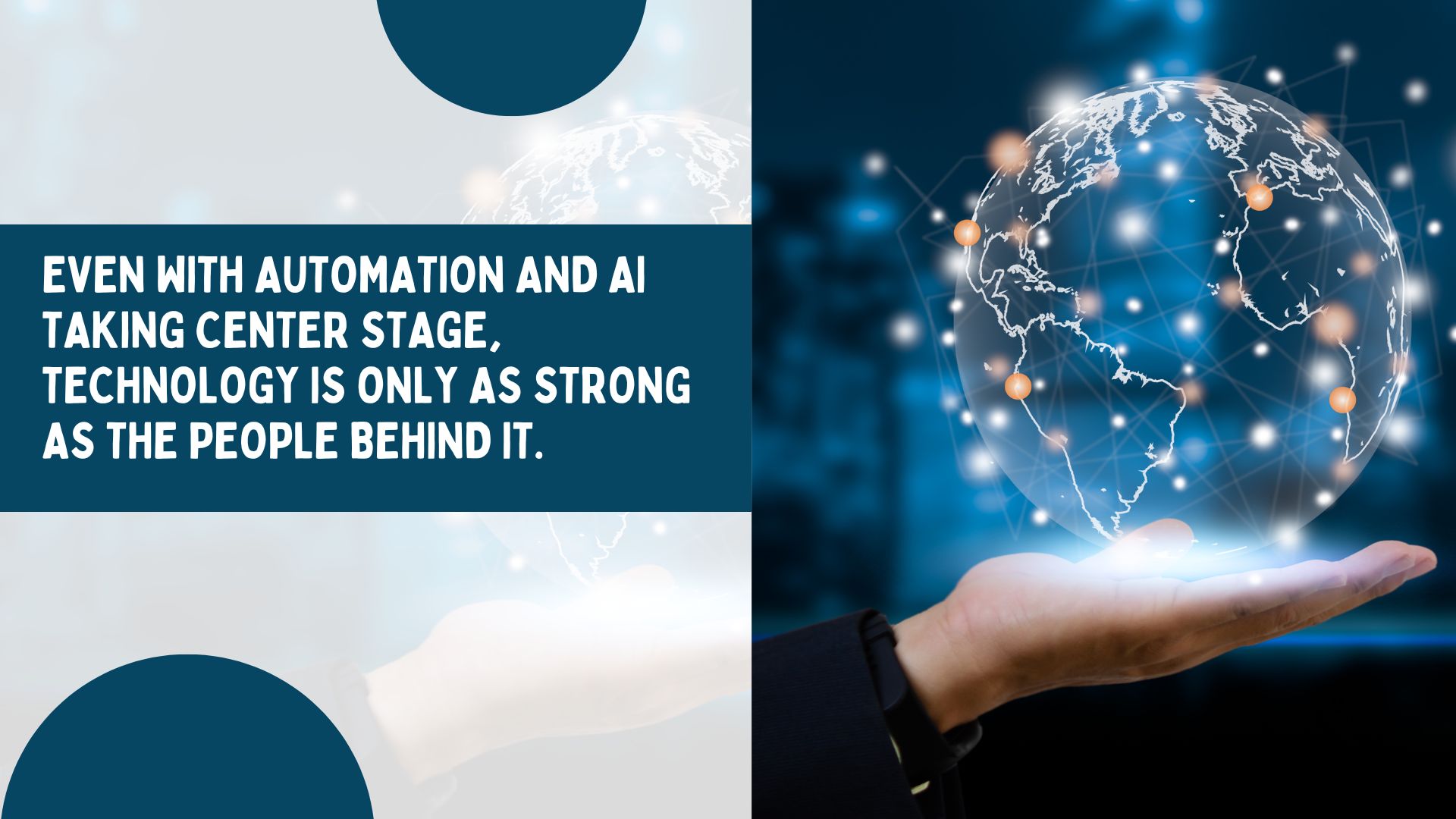
Rethinking IT Priorities in 2025
As we move through 2025, one thing that is clear is that technology is no longer just an enabler of business but the very foundation of growth, efficiency, and innovation. The last few years have been marked by rapid digital acceleration, AI breakthroughs, and increasing pressure on organizations to deliver value faster, smarter, and more sustainably.
But this acceleration has also brought an important inflection point- businesses can no longer rely on the same IT priorities that guided them even two or three years ago. What worked in 2022 or 2023 like adopting cloud infrastructure, investing in automation, or implementing DevOps now needs a deeper re-evaluation in the context of cost efficiency, cyber resilience, talent, and ethical AI adoption.
At PCPL, we work with businesses across industries to realign their IT priorities, not just to keep pace with change but to lead with foresight.
Getting More Out of Digital Investments
For most enterprises, the digital transformation race began long ago. Cloud migrations, ERP overhauls, and data modernization projects are already well underway. But the challenge in 2025 has been not just about adopting technology, but also optimizing it.
Many CIOs are realizing that their digital ecosystems are fragmented, over-budget, and underutilized. In fact, industry surveys indicate that nearly 40% of cloud spend goes to waste due to inefficient resource allocation.

Optimization ensures that technology not only serves business goals but does so efficiently, turning every IT dollar into measurable business value.
AI Everywhere, But With Governance and Purpose
AI is at the heart of every boardroom discussion today. From generative AI assistants to AI-driven analytics, automation has evolved from being a productivity tool to a strategic differentiator.
However, 2025 is the year where AI adoption has moved from experimentation to responsible, governed deployment. Businesses are now realizing that AI without strategy can lead to chaos, or worse, compliance risks.
The new IT priority is to build AI systems with guardrails, focusing on ethical and transparent data usage aligned with global regulations, explainable AI (XAI) to ensure clarity in decision-making, and human-AI collaboration frameworks that empower employees rather than replace them.
We’re helping organizations design AI-powered workflows that are compliant, explainable, and scalable. The key is to use AI to augment business intelligence, automating the repetitive while amplifying human creativity and judgment.
Cyber Resilience Over Cybersecurity
Traditional cybersecurity focused on defense, building walls to prevent attacks. But in 2025, resilience has taken precedence over protection alone.
With cyber threats growing more sophisticated, organizations must assume that breaches are inevitable and plan for rapid detection, containment, and recovery.

In short, the question is no longer “Can we prevent attacks?” but “How quickly can we recover and continue delivering?”
Reimagining Data Strategy for the AI Age
Data is now the fuel that drives AI and analytics, but raw data without strategy leads to digital clutter.
Moving forward to 2026, organizations need to move beyond mere data collection to data intelligence. The focus should be on building unified data ecosystems that can deliver trustworthy insights in real time.
This means rethinking
- Data quality and governance- ensuring accuracy, consistency, and security.
- Interoperability- connecting data across departments, geographies, and systems.
- Edge and real-time data processing- enabling faster decisions closer to where data is generated.
The modern enterprise needs to treat data as a core product, managed with the same rigor and lifecycle governance as software.
PCPL’s approach to data modernization emphasizes integration, visibility, and value extraction, helping businesses use their data as a true competitive advantage.
The Human Core of IT

A major IT priority in 2025 has been building tech fluency across the organization. This goes beyond hiring engineers, it involves cultivating a culture where every employee understands how technology drives business goals- AI and data literacy programs for all departments, cross-functional teams that blend business and tech expertise, and continuous learning and reskilling through microlearning and mentorship.
Companies that invest in empowering people alongside technology will have the edge, not just in innovation, but in adaptability and long-term growth.
Sustainability and Green IT
As governments tighten environmental regulations and consumers demand eco-conscious business practices, Green IT has become a priority.
This includes optimizing data centers and cloud usage for energy efficiency, implementing circular economy practices in hardware lifecycle management, and measuring and reporting IT carbon footprints as part of ESG commitments.
Forward-looking CIOs are integrating sustainability KPIs into their IT strategy, because responsible technology is future-ready technology.
We advocate for tech that doesn’t just perform, but preserves, both business and the planet.
Platform Thinking and Composable IT
The traditional monolithic IT architecture is giving way to modular, composable systems that allow faster innovation and integration.
Composable IT enables organizations to assemble, reassemble, and scale digital capabilities as business needs evolve, without reinventing the wheel.
This shift requires a platform-first mindset
- APIs and microservices that enable interoperability.
- Low-code and no-code tools that accelerate deployment.
- Unified governance that maintains control amid flexibility.
In 2025, adaptability has been the true measure of resilience. And composable architectures ensure that businesses can evolve without disruption, turning change into a competitive strength.
Aligning IT with Business Strategy
Perhaps the most important rethink in 2025 is that IT priorities should no longer be reactive to business plans, they should shape them.
CIOs are now strategic partners, not just service providers. The modern IT roadmap must directly contribute to revenue growth, customer experience, and innovation.
This involves co-creating business outcomes with technology teams, integrating KPIs that link IT investments to measurable ROI, and continuous alignment reviews between business leaders and IT heads.
Our consultancy approach focuses on bridging this gap between business vision and technology execution, ensuring that every digital initiative has a clear strategic purpose.
The Road Ahead

The IT function is no longer a support department but a strategic command center of the modern enterprise. The winners of tomorrow will be those who optimize technology investments for maximum business value, adopt AI and automation responsibly, build data-driven, resilient, and sustainable ecosystems, and empower people to lead in a digital-first world.
We believe that technology transformation is a continuous journey of rethinking, realigning, and reinventing. As your technology partner, we help you look beyond trends, to strategy, synergy, and sustainability. Because the future belongs to businesses that not only embrace change but anticipate it.
References
https://www.cio.com/article/4046473/rethinking-the-it-organization-for-the-agentic-ai-era.html
